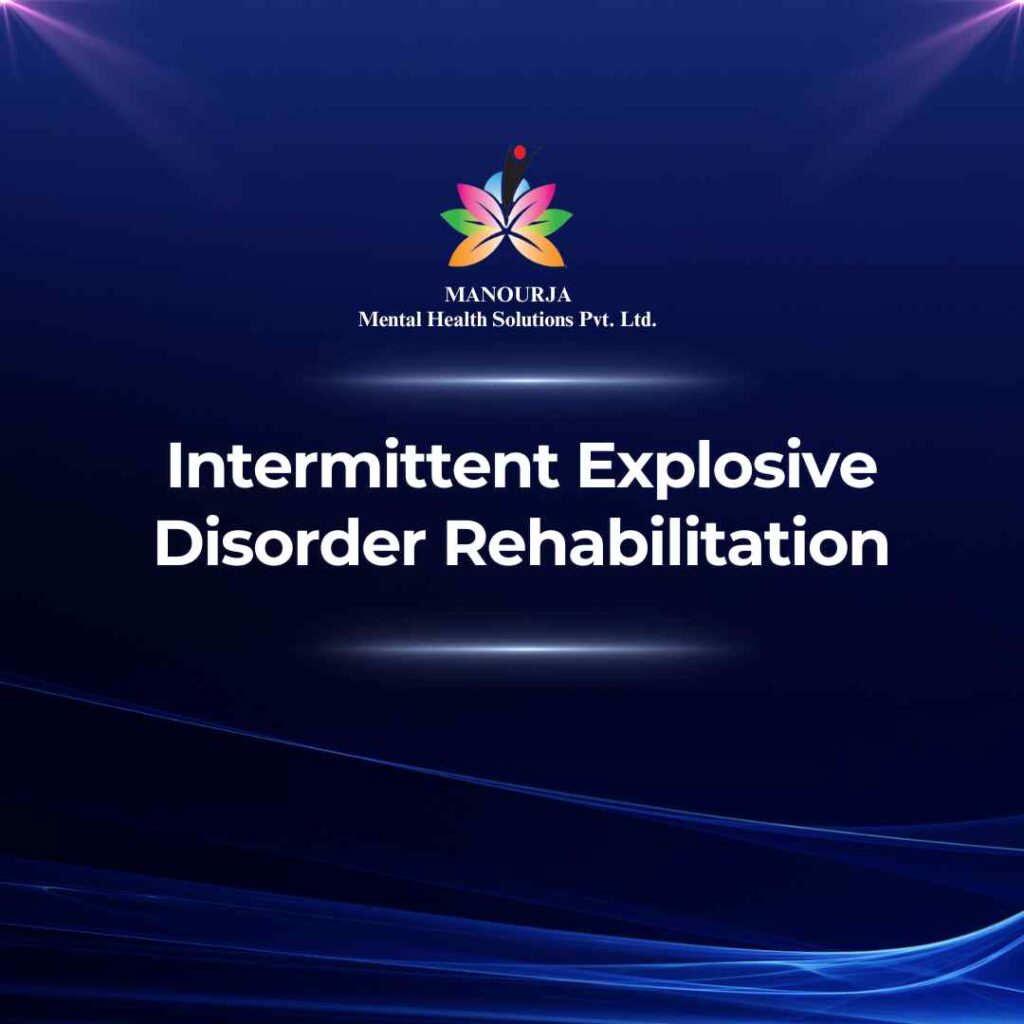Intermittent Explosive Disorder Rehabilitation

Intermittent Explosive Disorder (IED) is characterized by episodes of aggressive, violent behavior or angry verbal outbursts in which the individual reacts grossly out of proportion to the situation. These episodes are impulsive, not premeditated, and are not committed to achieve some tangible objective like money or power. Recognizing the symptoms and addressing them through appropriate treatment can significantly improve functioning and relationships.
Signs and Symptoms of Intermittent Explosive Disorder
- Recurrent episodes of explosive anger, resulting in verbal assaults, temper tantrums, or physical aggression.
- Disproportionate reactions, where the intensity of the anger or aggression is grossly out of proportion to the provoking situation.
- Frequency of episodes, which can occur frequently or be separated by weeks or months of non-aggression.
- Post-episode remorse, guilt, or embarrassment when the individual realizes the inappropriateness of their behavior.
- Impulsive, not premeditated behavior with aggressive episodes that are impulsive and/or anger-based rather than planned.
- Impairments in interpersonal relationships, occupational difficulties, and legal problems stemming from the explosive episodes.
Indicators for Outpatient Psychosocial Rehabilitation (OPD)
- Mild to Moderate Frequency and Severity: Individuals who experience episodes that are less frequent or severe might manage well with outpatient treatment.
- Strong Support System: Individuals who have supportive family members or friends that can help manage and monitor their behavior.
- Commitment to Treatment: Individuals who are motivated and committed to attending regular therapy sessions and adhering to treatment protocols.
Indicators for Inpatient Psychosocial Rehabilitation (IPD)
- Severe and Frequent Episodes: Individuals who exhibit frequent and severe episodes might require more intensive and structured treatment environments.
- Safety Risks: When there’s a high risk of harm to oneself or others, inpatient care provides the necessary environment for close monitoring and immediate intervention.
- Ineffective Outpatient Treatment: Previous outpatient treatments have not been effective, and the symptoms have persisted or worsened.
Factors Influencing the Decision
- The severity and frequency of aggressive episodes.
- The individual’s history with treatment programs and their effectiveness.
- Risk assessment for potential harm.
- Availability of supportive networks to aid in treatment.
How Psychosocial Rehabilitation Aids in Treating Intermittent Explosive Disorder
Psychosocial rehabilitation for IED focuses on helping individuals develop skills to control impulsivity, manage anger, and improve social interactions. This involves various therapeutic strategies designed to increase self-awareness, control, and appropriate expression of emotions.
Specific Techniques and Approaches at MANOURJA
- Cognitive Behavioral Therapy (CBT): Helps individuals recognize the thoughts that trigger anger and develop healthier responses.
- Anger Management: Techniques to control arousal and manage anger, such as relaxation exercises, stress management, and communication skills.
- Dialectical Behavior Therapy (DBT): Focuses on mindfulness, distress tolerance, emotion regulation, and interpersonal effectiveness, particularly useful for those with IED.
- Group Therapy: Provides a controlled environment for individuals to interact with others, practice new skills, and receive feedback.
Steps in Psychosocial Rehabilitation at MANOURJA
- Comprehensive Evaluation: Detailed assessment of the individual’s emotional, behavioral, and psychological status to tailor an appropriate intervention plan.
- Development of a Personalized Treatment Plan: Creating a customized treatment approach based on the individual’s specific needs.
- Engagement in Therapeutic Activities: Regular participation in individual and group therapy sessions designed to address the triggers and responses.
- Regular Monitoring and Adjustment: Ongoing evaluation of progress with adjustments to the treatment plan as needed to ensure effectiveness.
- Transition Planning and Aftercare: Preparing for the transition to community living with ongoing support strategies to manage stress and aggression.
“Every moment of self-control leads to a lifetime of freedom.”
